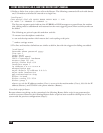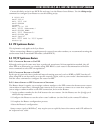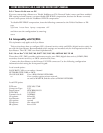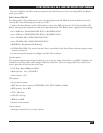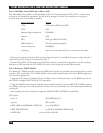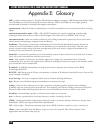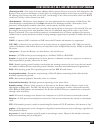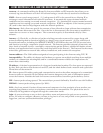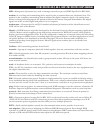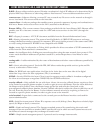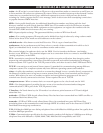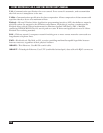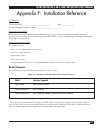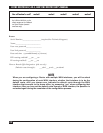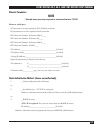
ASYNC ROUTER AR-P, AR-5, AND SYNC ROUTER USER’S MANUAL
122
routervu—A command enabling the RouterVu feature available on IPX networks that allows you to
remotely log into the Router over the LAN without having a console directly attached to the Router.
ICMP—Internet control message protocol. (1) A sub-protocol of IP at the network layer, allowing IP to
exchange control information with other IP machines. It automatically reports unusual network
conditions such as routing errors and network congestion. (2) Automatically reports unusual network
conditions such as routing errors and network congestion. ICMP is an adjunct to the internet protocol
(IP) and is often used to help diagnose and solve network problems.
idle timeout—Each client may specify the amount of time allowed to elapse without data transmission,
before the Router disconnects the line. Once the line is disconnected, the client must re-establish its
connection to a server or host computer. The reconnection policy is determined solely by client
software.
internet—(1) Physically, a collection of packet switching networks connected by routers along with
protocols allowing them to function logically as a single, large, virtual network. (2) The collection of
networks and routers, including the ARPANET, MILNET, and NSFnet that uses TCP/IP protocol suite
and function as a single, cooperative virtual network. The Internet provides universal connectivity and
three levels of network services: unreliable, connectionless packet delivery; reliable full duplex stream
delivery; and application-level services like e-mail that build on the first two. The Internet reaches many
universities, government research labs, military installations, and commercial enterprises.
internet address—The 32-bit address assigned to hosts participating in the Internet using TCP/IP.
interoperability—The ability of software and hardware to operate on multiple machines from multiple
vendors, to communicate meaningfully and in a coordinated manner without the implications of a
master-slave relationship.
IP address—A decimal representation of a four-part hexadecimal number. The four parts are separated
by dots. Each part has a value between 0 and 255, and the whole defines both a network and a particular
IP machine on that network.
IP—Internet protocol. Provides routing and communication services that allow messages to be transmitted
between nodes on networks. IP also defines the Internet datagram as the unit of information passed
across the Internet. Provides the basis for Internet connectionless, best-effort packet delivery service.
IPX—Internet packet exchange protocol. The network-layer protocol defined by Novell for use with NetWare.
IPXWAN—internet packet exchange protocol for WANs.
LAN—Local area network. Consists of interconnected computers in close proximity of one another, not
requiring long distance carriers or telephone connections to communicate. The physical-site area is
limited by the degradation of signals through the connection media.
login—A process whereas a user or device provides a name and password to gain access to another
device. In order to configure a Router, you have to log into it as root, and provide a root password. Once
logged on, you have system-administration privileges.



